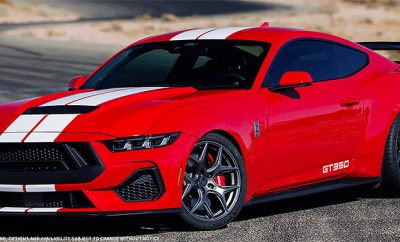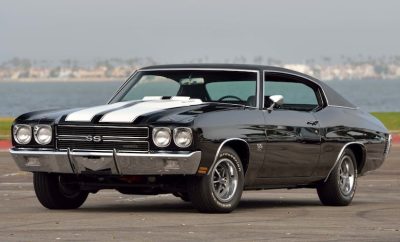Best Muscle Cars
The 1970 Chevrolet Chevelle SS 454: The Peak of American Muscle

The 1970 Chevrolet Chevelle SS 454 is one of the most iconic and powerful muscle cars ever produced. This car represented the zenith of the muscle car era, combining aggressive styling, groundbreaking performance, and a cultural resonance that has endured for half a century.
Unspoken features of the Chevelle SS 454 and this era of cars were that they were louder than nearby thunder, burnouts, and doughnuts at a moment’s notice, with a design as iconic today.
The usual negatives of bad suspension, weight, and power are considered when comparing 1960s-70s technology to the present day. Every car in that era from any country had leaf spring suspension and was overly heavy. Therefore, take this period of vehicle for the freedom of styling and design it represents.
The Birth of a Legend: The Chevelle’s Inception
The Chevrolet Chevelle was first introduced in 1964 as a mid-sized car designed to compete with the Ford Fairlane and other similar models in the growing market for intermediate cars. The Chevelle quickly gained popularity due to its versatile lineup, which included everything from economical family sedans to powerful muscle cars. By 1968, the Chevelle had undergone several redesigns. Chevrolet positioning the Chevelle as a performance powerhouse within its lineup.
The Chevelle SS, short for Super Sport, became the performance-oriented version of the Chevelle, and by 1970, the SS badge had become synonymous with serious power and aggressive styling. The 1970 model year marked a high point for the Chevelle, especially with the introduction of the SS 454, which would go down in history as one of the most formidable muscle cars ever built.
Design and Aesthetic Appeal
The 1970 Chevelle received a significant redesign that gave it a more muscular and aggressive appearance. The new body featured a long hood, a short deck, and a wide stance, contributing to the car’s intimidating look. The front end featured a split grille with quad headlights, while the rear end was characterized by horizontal taillights. The overall design was sleek and powerful, embodying the essence of American muscle.
The SS 454 variant was easily distinguishable by its specific badging, including the “SS” emblems on the grille, fenders, and rear deck. It also featured a domed hood with functional cowl induction, which not only added to the car’s aggressive appearance but also provided a practical boost in performance by directing cooler air into the engine. Optional stripes running down the center of the car further enhanced its sporty look.
Inside, the Chevelle SS 454 offered a no-nonsense interior designed for driving enthusiasts. The dashboard was straightforward, with round gauges set into a black background, and the SS 454 came standard with bucket seats and a center console, underscoring its performance credentials. While the interior was relatively simple compared to luxury models of the time, it was functional and driver-focused, which appealed to those who were more interested in what was under the hood than in luxury amenities.
Performance and Specifications
The 1970 Chevrolet Chevelle SS 454 was offered with two versions of the 454 cubic inch V8 engine, both of which were designed to deliver exceptional performance. The standard version, known as the LS5, produced a substantial 360 horsepower and 500 lb-ft of torque. However, it was the optional LS6 engine that truly made the Chevelle SS 454 a legend. The LS6 engine was rated at a staggering 450 horsepower and 500 lb-ft of torque, making it the most powerful production engine offered by Chevrolet at the time.
The LS6 engine featured an 11.25:1 compression ratio, forged aluminum pistons, a solid-lifter camshaft, a high-flow intake manifold, and a 780-cfm Holley four-barrel carburetor. This engine was capable of propelling the Chevelle SS 454 from 0 to 60 mph in just over 5 seconds and could complete the quarter-mile in around 13 seconds at speeds exceeding 100 mph, depending on the driver’s skill and track conditions. These figures were extraordinary for a production car of that era and are still impressive today.
To handle all that power, the Chevelle SS 454 was equipped with a heavy-duty suspension, power front disc brakes, and wider tires. The car could be ordered with either a Muncie M22 “Rock Crusher” four-speed manual transmission or a Turbo-Hydramatic 400 three-speed automatic, both of which were capable of handling the immense torque produced by the 454 engine.
Options and Trims: Customization for the Muscle Car Enthusiast
Chevrolet offered a range of options and trims for the 1970 Chevelle SS 454, allowing buyers to customize their cars to their liking. In addition to the choice between the LS5 and LS6 engines, buyers could also select from various rear axle ratios, which could further enhance acceleration or top speed depending on their preferences.
One of the most popular options was the cowl induction hood, which not only added to the car’s aggressive look but also improved performance by feeding cooler air directly into the engine. Other options included the F41 performance suspension, which provided better handling, and the ZL2 special ducted hood, which was part of the cowl induction system.
The interior could also be customized with options such as a tilt steering column, AM/FM radio, and an 8-track tape player, which was a popular choice for music lovers at the time. Despite the emphasis on performance, Chevrolet ensured that buyers could still enjoy a range of amenities that made the Chevelle SS 454 a well-rounded car.
Production Numbers and Market Performance
The 1970 Chevelle SS 454 was produced in relatively limited numbers, especially the LS6 variant, making it a highly sought-after car among collectors today. Exact production numbers vary depending on the source, but it is estimated that around 4,475 LS6-equipped Chevelles were built for the 1970 model year. This low production figure, combined with the car’s legendary status, has made the LS6 one of the most desirable muscle cars in the classic car market.
Despite its limited production, the 1970 Chevelle SS 454 was a commercial success for Chevrolet, thanks in part to the growing demand for high-performance cars at the time. The SS 454 was positioned as the top-tier model in the Chevelle lineup, and it attracted buyers who wanted the best that Chevrolet had to offer in terms of power and performance.
However, the muscle car market was starting to face challenges by 1970. Increasing insurance costs, tightening emissions regulations, and the looming oil crisis would soon put an end to the golden era of muscle cars. The Chevelle SS 454 was one of the last great muscle cars of its time, and it would soon be followed by more subdued models as manufacturers adapted to the changing market.
Cultural Impact and Legacy
The 1970 Chevrolet Chevelle SS 454 has left an indelible mark on American culture, becoming a symbol of the muscle car era and a representation of unbridled automotive performance. The car’s aggressive design and immense power captured the imagination of a generation, and it quickly became a favorite among car enthusiasts, street racers, and collectors alike.
In popular culture, the Chevelle SS 454 has been featured in numerous movies, television shows, and music videos, often representing the pinnacle of American muscle. One of the most notable appearances was in the film Dazed and Confused (1993), where a 1970 Chevelle SS 454 was prominently featured as the car of choice for one of the main characters, embodying the rebellious spirit of the era. The car’s presence in media has only added to its mystique and desirability.
The Chevelle SS 454’s influence can also be seen in the modern muscle car movement. As interest in classic muscle cars has grown, so too has the appreciation for the 1970 Chevelle SS 454. Restored examples of the car often fetch high prices at auctions, and it is considered one of the crown jewels of American automotive history.
Challenges in the Marketplace
While the 1970 Chevrolet Chevelle SS 454 is celebrated today, it faced several challenges in the marketplace during its time. One of the biggest hurdles was the rapidly changing automotive landscape. As emissions regulations became stricter and insurance premiums for high-performance cars skyrocketed, many potential buyers were discouraged from purchasing muscle cars like the Chevelle SS 454.
Moreover, the muscle car market was becoming increasingly competitive, with other manufacturers like Ford, Dodge, and Plymouth offering their own high-performance models. The Ford Mustang Boss 429, Dodge Charger R/T, and Plymouth Road Runner 440 Six Pack were all formidable competitors, each with their own loyal fan base. While the Chevelle SS 454 was undoubtedly powerful, it had to contend with these rivals in a market that was beginning to contract.
Despite these challenges, the Chevelle SS 454 managed to stand out, thanks in part to its impressive performance and Chevrolet’s strong reputation. However, by the early 1970s, the muscle car era was coming to an end, and cars like the Chevelle SS 454 would soon be replaced by more fuel-efficient and less powerful models.
The Chevelle SS 454 in Automotive History
The 1970 Chevrolet Chevelle SS 454 holds a special place in automotive history as one of the last and greatest muscle cars of its era. It represents a time when American manufacturers were pushing the boundaries of performance and design, creating cars that were as thrilling to drive as they were to look at.
Today, the Chevelle SS 454 is celebrated as a classic, with restored and well-preserved examples commanding high prices in the collector car market. It is revered not only for its performance but also for its role in defining the muscle car genre. The LS6-powered Chevelle SS 454, in particular, is considered by many to be the ultimate expression of American muscle, a car that epitomizes the power and excess of the era.
The legacy of the 1970 Chevrolet Chevelle SS 454 continues to influence modern car enthusiasts, inspiring a new generation to appreciate the raw power and bold design that characterized the muscle car era. Whether in original form or as part of a restomod project, the Chevelle SS 454 remains a symbol of American automotive ingenuity and a reminder of a time when horsepower was king.
The 1970 Chevrolet Chevelle SS 454 is more than just a car; it is a symbol of an era when American muscle cars ruled the streets and captured the imagination of car enthusiasts everywhere. Its combination of aggressive design, unparalleled performance, and cultural significance has ensured its place in automotive history as one of the greatest muscle cars ever built.









0 comments